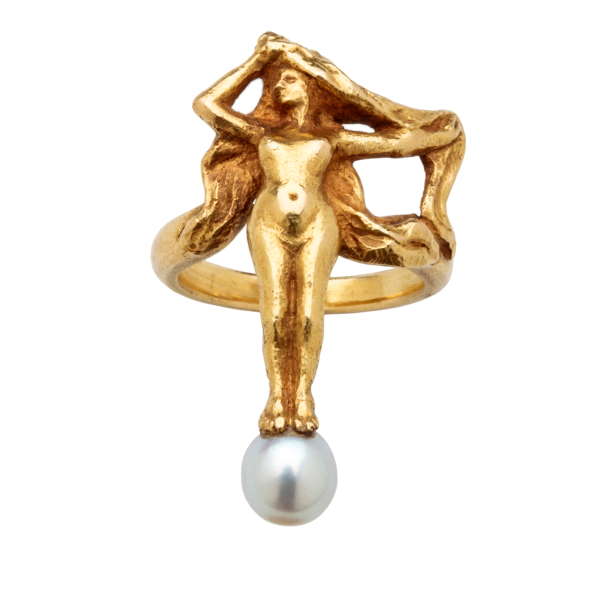It is virtually impossible to do justice to the evolution of jewelry from the Baroque period (c. 1700) to Modern times in a short synopsis, but these are a few highlights. Many of the functional aspects of finger-rings continued: they served for betrothal and marriage, for signing and family identification, for memorial purposes, as well as for pure ornament. However, some new types of rings emerge during this period: such as puzzle rings, gimmick rings, perfume rings, and rings that celebrated scientific achievements (e.g., watch rings) are but a few of the examples.
This time span witnesses the emergence of the “archaeological style,” of which the work of Fortunato Pio Castellani in the 1830s to 1860s is a particularly well-known example, one that fits in the Neo-Classical period. We see the flourishing of other styles related to artistic movements in painting, sculpture, and architecture. These include Art Nouveau and the Arts and Crafts Movement, both beginning around the 1880s, and Art Deco in the 1920s, 30s, and 40s. It also covers the emergence of some of the most famous twentieth-century houses of jewelry, such as Cartier, Charmet, Boucheron, Bulgari, Tiffany’s, Van Cleef & Arpels, and Mellerio, to mention only a few. Jewelry historians responsible for exhibitions in major museums have begun to trace the historical contributions and characterize the styles of jewelry, including rings, not only of these different artistic movements, but also of these great houses.
Two other sometimes-overlapping categories of later jewelry are of significant import. The first category, “artist jewelry,” consists of jewelry by artists mostly known for their work in other media, such as Picasso, Calder, Dali, Robert Indiana, Louise Bourgeois, Yves Klein, Anish Kapoor, and many others. The second category, “studio jewelry” includes work by modern and contemporary goldsmiths. Among those practicing today of special mention are Wendy Ramshaw and others belonging to the Goldsmith’s Company in London, dedicated to continuing the craft since it received its first royal charter in 1327. Others of different national origins include the Italian Giovanni Corvaja (handled by Adrian Sassoon in London), the American Joel Arthur Rosenthal or JAR of Paris (whose international exhibition was staged at the Metropolitan Museum in New York in 2013), Otto Jakob of Germany, and the newcomer Wallace Chan of China. The experienced viewer-collector, as well as the newcomer to the field, can begin to learn about modern jewelry at the Museum of Fine Arts in Boston with its dedicated jewelry gallery and specialized curator, the Victoria and Albert Museum in London which houses the William and Judith Bollinger Gallery, and the private collection of Alice and Louis Koch.
